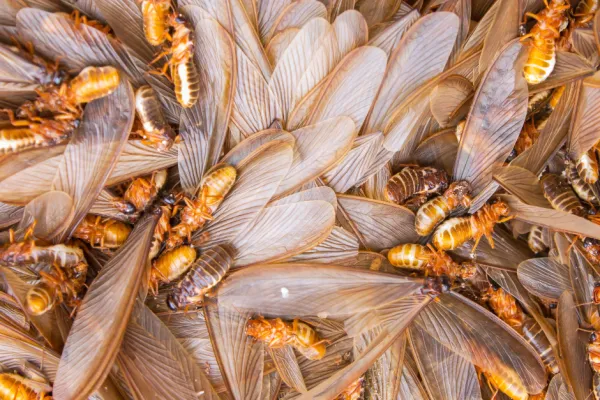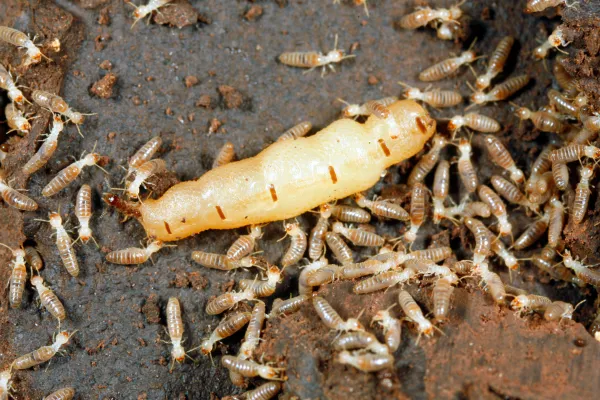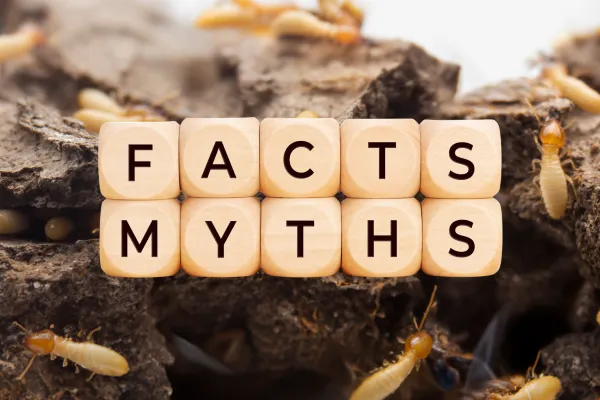Flying Ants vs. Termites
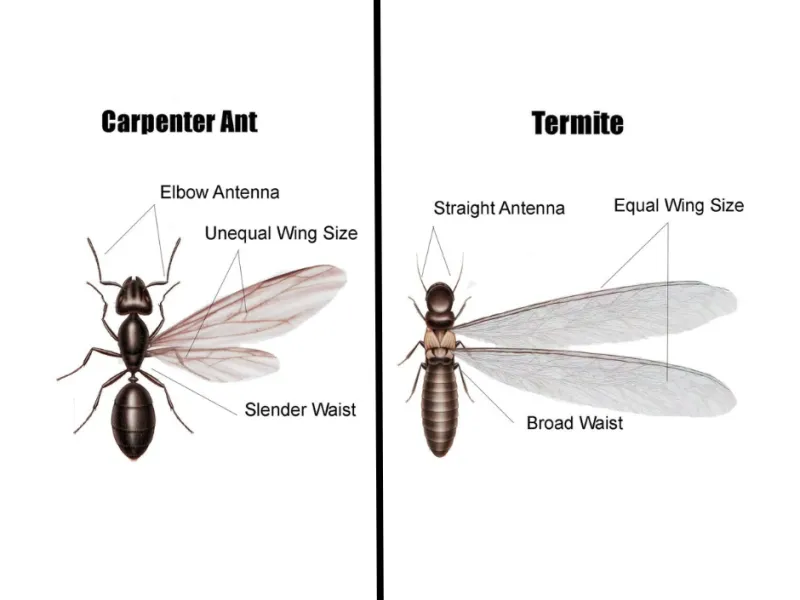
Flying Ants vs. Termites: How to Spot the Differences
Seeing a swarm of winged insects around your home can be alarming. Are they flying ants, or could they be termites? While they may look similar at first glance, these two pests have significant differences in appearance, behavior, and potential for damage. Identifying which pest you're dealing with is crucial for effective treatment and prevention. In this blog, we'll explore the key differences between flying ants and termites, how to spot an infestation, and the best ways to protect your home from these unwelcome invaders.
1. Understanding the Biological Differences
Flying Ants:
Flying ants are the reproductive members of ant colonies, often seen swarming in the warmer months. They belong to the family Formicidae in the order Hymenoptera, which makes them closely related to bees and wasps. One of the most common flying ants homeowners encounter is the carpenter ant (Camponotus species).
Termites:
Conversely, termites belong to the order Blattodea and are more closely related to cockroaches than ants. They are eusocial insects that live in large colonies, with specialized castes including workers, soldiers, and reproductives (swarmers). Unlike ants, termites feed on cellulose, making them a major threat to wooden structures.
2. Key Physical Differences Between Flying Ants and Termites
To accurately identify whether you're dealing with flying ants or termites, look for these distinct characteristics:
Body Shape:
Flying ants have a narrow, pinched waist, giving them an hourglass appearance.
Termites have a broad, straight-sided body with no waistline.
Antennae:
Ants have bent or elbowed antennae.
Termites have straight, beaded antennae.
Wings:
Flying ants have two pairs of wings, with the front pair being noticeably larger than the back pair.
Termites have two pairs of wings equal in size and longer than their bodies. Their wings are delicate and tend to shed easily.
Color and Size:
Carpenter ants are usually dark brown or black and measure about 1/2 inch long.
Termite swarmers can be brown or black, while worker termites (not seen during swarming) are pale, creamy white.
In summary, if you see a winged insect with a wasp-like thin waist and bent antennae, it's a flying ant; if it has a thick waist and straight antennae, it's a termite. Likewise, wings of equal length point to a termite, while unequal wing lengths indicate an ant.
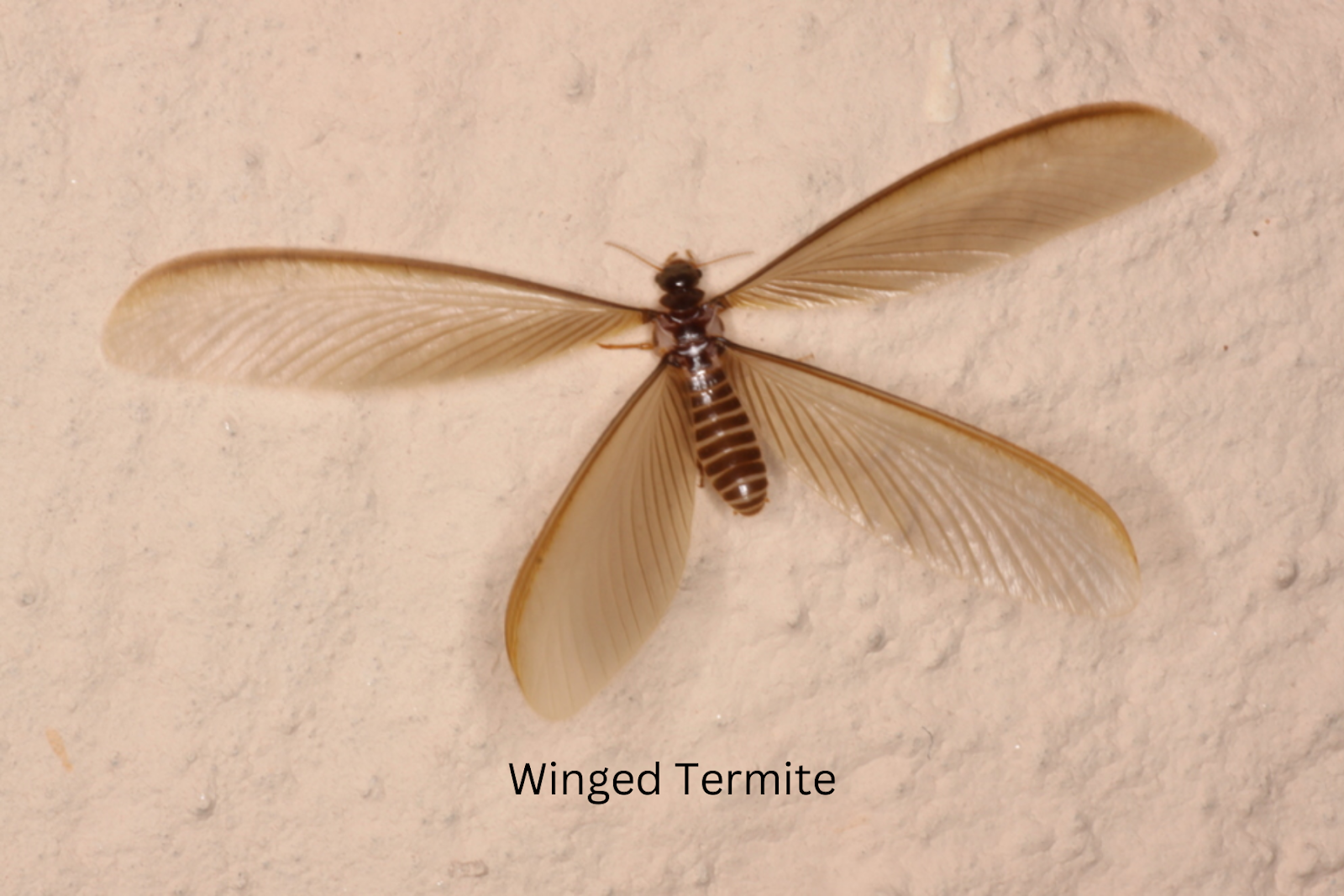
3. Behavioral Differences: Nesting, Feeding, and Swarming
Nesting Habits:
Termites build their nests inside wood, soil, or structural foundations, staying hidden and protected.
Carpenter ants nest in wood but do not consume it. They carve out galleries in damp or decaying wood, often establishing satellite colonies in walls and attic spaces.
Diet:
Termites eat wood and plant fibers, digesting cellulose with the help of symbiotic gut bacteria.
Flying ants feed on nectar, other insects, and household food scraps but do not eat wood.
Swarming Behavior:
Termites typically swarm in the spring, often after rain, and are attracted to light.
Flying ants swarm in late spring or summer, often on warm evenings.
4. Signs of Infestation in Your Home
Knowing the signs of an infestation can help prevent serious damage:
Discarded Wings:
Termites shed their wings in large numbers, leaving piles of uniform-sized wings near windowsills and doors.
Flying ant wings do not shed as easily and come in different sizes.
Wood Damage:
Termites hollow out wood from the inside, often leaving behind a thin veneer. Their tunnels are packed with mud and appear rough.
Carpenter ants create smooth, sanded tunnels, pushing out sawdust-like debris (frass).
Mud Tubes:
To stay moist and protected, subterranean termites build pencil-thin mud tubes along foundations, walls, and crawlspaces.
Carpenter ants do not create mud tubes.
Live Sightings:
Seeing large, wingless black ants in your home, especially at night, indicates a carpenter ant problem.
Termite workers are rarely seen as they remain hidden within wood or soil.
While flying ants and termites may look similar, their differences in appearance, behavior, and the damage they cause make proper identification crucial. Carpenter ants nest in wood but do not consume it, while eastern subterranean termites actively eat wood and can compromise the integrity of your home. You can protect your home from costly damage by learning these key distinctions and taking preventive measures.
If you're unsure whether you have termites or carpenter ants, or if you suspect an active infestation, Mares Exterminating Master Technicians can provide a thorough inspection and recommend the best treatment. Our team is experienced in termite and ant control and will ensure your home stays worry-free year-round!

